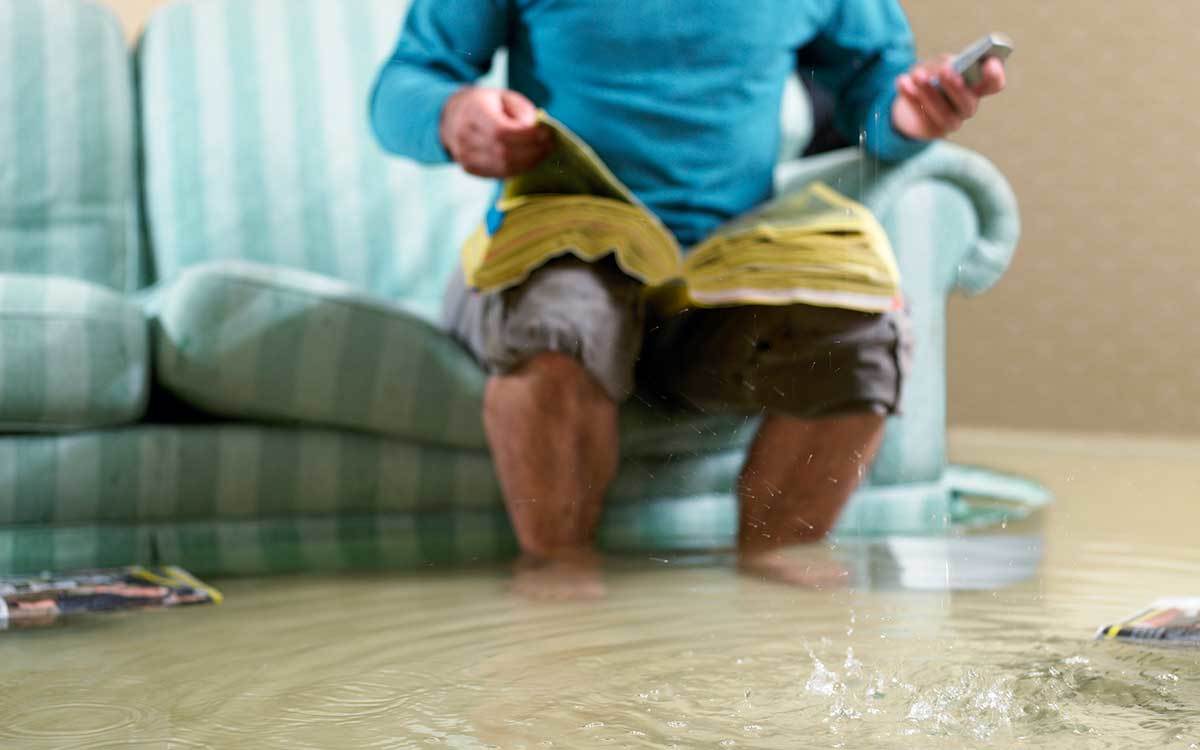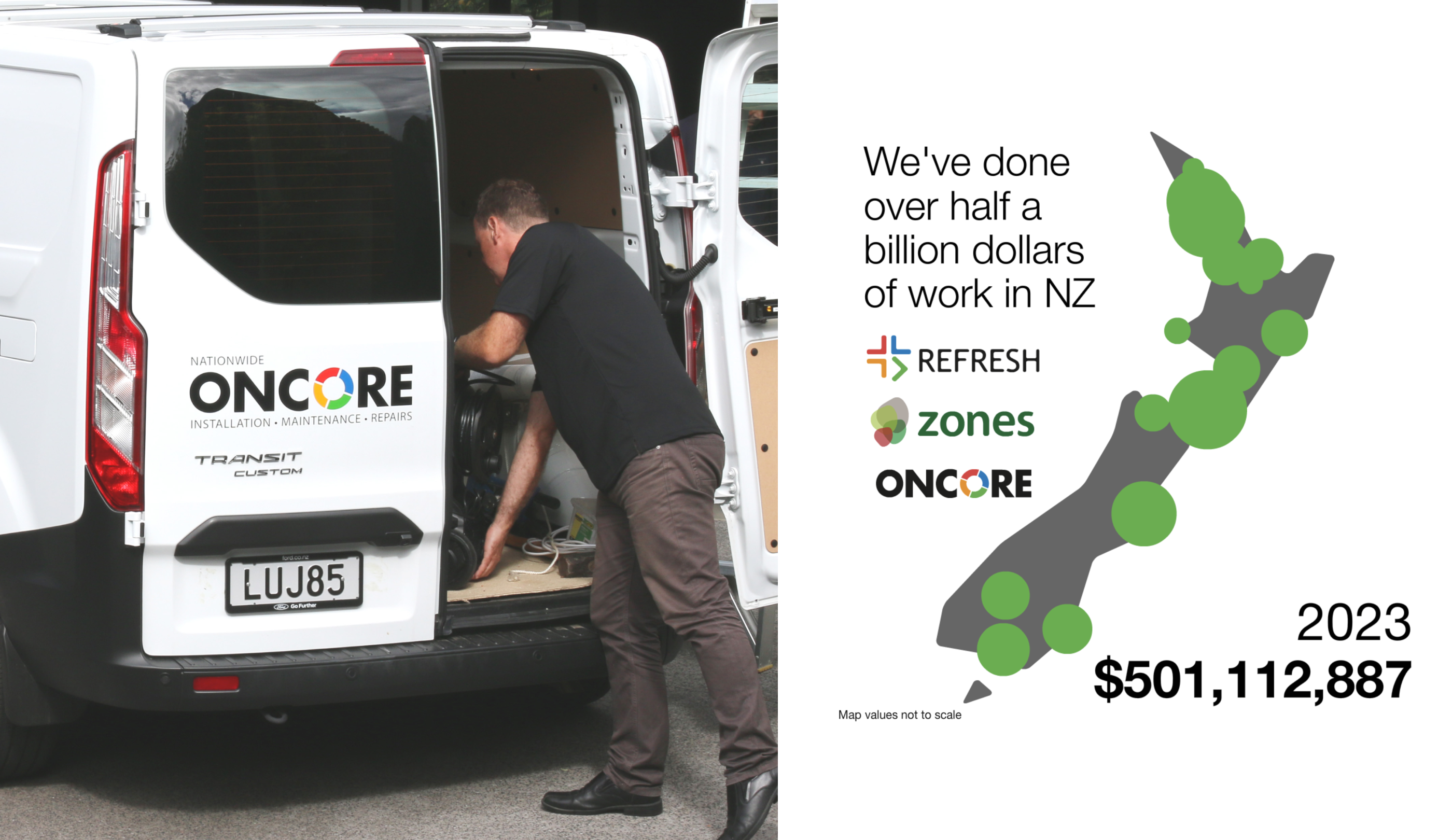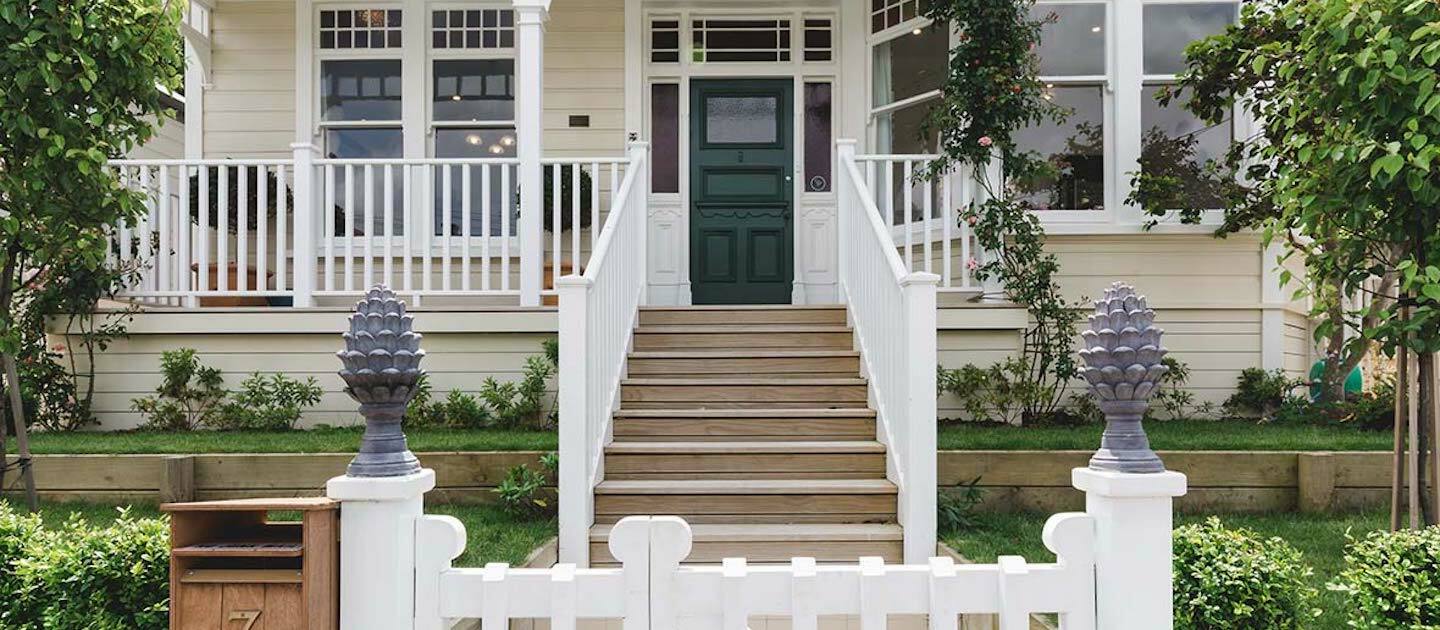- How can I prevent further water damage to my home?
- What are the most common causes of water damage?
- How can I reduce my flood or water damage in the short term?
- How can I prevent water damage in the long-term?
- What is the difference between greywater and blackwater?
- Flood and water damage restoration
- Claiming insurance on my flood and water damage
- Will my insurance policy cover flood damage?
- Why should I include “hidden gradual damage” in my home and contents insurance policy?
- How long after I have claimed my insurance can I get my water damage repaired?
- Is building consent required for fixing water damages in NZ?
- How much will it cost to get my home restored after flood and water damage?
- Getting my home restored after flood and water damage
- Contact a Professional
How can I prevent further water damage to my home?
Back to topIf your home is damaged by flooding or perhaps a burst pipe, there are a few steps that you can take to prevent further damage. Of course, the first steps are to prioritise your safety and call for the appropriate assistance. But how do you reduce the chances of water damage occurring in the first place?
What are the most common causes of water damage?
Back to topWhile extreme weather can’t be prevented, the durability of your home can be improved to withstand harsh weather and flooding. Most residential water damage can be easily prevented through regular inspections and maintenance. Arranging home inspections, repairs and updates will help to prevent the following common causes from causing damage to your home:
- Extreme weather
- Poor drainage
- Plumbing issues
- Faulty appliances
- Roof leaks
How can I reduce my flood or water damage in the short term?
Back to topIf your home has already been hit by water damage, there are a few steps you should take to prevent further damage. Before you do anything else, ensure you and the other occupants are safe and that any leaks/flooding will not risk the health and sanitation of you and your family. Check for any exposed electrical work that could pose a threat and call emergency services if the situation appears dangerous. From there, contact your local flood and water damage restoration company as soon as possible.
How can I prevent water damage in the long-term?
Back to topOne of the most practical ways to recognise hidden water damage is to keep an eye on your water bill. If it suddenly increases without good reason you should probably book a leak inspection. If ignored, hidden water damage can lead to gradual damage, resulting in mould, rot and expensive repairs. Something as little as a bathroom leak or ceiling leak can cause a lot of if left unaddressed. Oncore can provide you with a water metre reading over a couple of days while no one is on the premises - this will help us to pinpoint whether or not there is a leakage issue.
If you have noticed that your water bill is suspiciously higher than it should be, Contact an Oncore Maintenance Specialist to book an inspection
Other than monitoring your water bills, you can take preventative measures through maintenance, repairs and installations. Especially if you live in a flood-prone area, ensuring your home is efficiently sealed and uses water-resistant materials is important. Requesting frequent inspections and repairs will help to prevent pipe burst, leaks and drainage issues before they become a larger issue.
What is the difference between greywater and blackwater?
Back to topThere’s clean water - and then there’s greywater and blackwater. Clean water is considered “safe” water: it generally flows through water supply lines and is safe to drink from the tap. Greywater, however, is more suited to watering the garden. This type of water contains contaminants and is often the used water from dishwashers, showers and washing machines. Blackwater is the one you seriously want to avoid. This may be sewage water, used toilet water, ground surface water or water that is the result of flooding rivers and streams. This type of water will usually contain harmful bacteria and is considered extremely unsanitary.
Flood and water damage restoration
Back to topIf your home has been affected by flood and water damage, the first step in the restoration process is to dry out your home as early and as quickly as possible. Oncore can take care of the restoration process using drying and dehumidifying equipment which will work to quickly extract interior water damage. From there, we can help you with the repair and restoration process.
How long will it take to dry out?
This will depend on the size of your home and the extent of the water damage, the state of the affected materials and the length of time the water damage has been in place. Typically, homes take a few days to a week to dry.
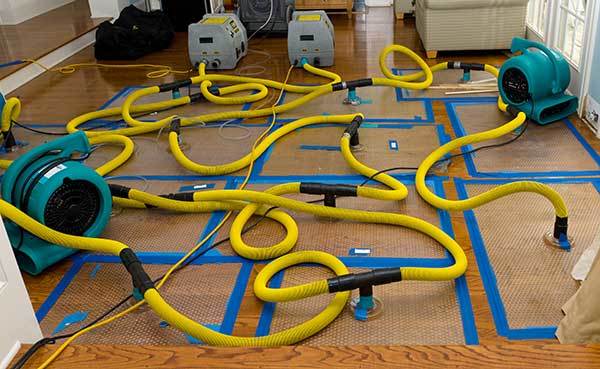
How long does the process take of getting your home restored?
Again, this will depend on the extent of the damage. For minor damage, it might be as simple as fixing a leak and the damaged area could be repaired or replaced within a week. Other homeowners may choose to spend months renovating their home in order to restore it and to prevent severe flood damage in the future.
How do I know if something will need to be fully replaced?
A professional will be able to advise you on whether or not areas of your home will require replacing, and this will often be influenced by how quick you were in beginning the drying out process. Carpets and insulation are two common features that are more likely to need replacement.
Claiming insurance on my flood and water damage
Back to topClaiming insurance on flood and water damage can be a complicated process. An insurance policy that covers flood damage might not cover long-term water damage. If this is the case, it’s worth looking into adding “hidden gradual damage” cover into your policy.
Will my insurance policy cover flood damage?
Back to topYou will need to check in with your insurance provider to see whether or not flood damage is covered in your policy. If your home has been flooded, it is important to take photos/videos of the damage and contact your insurance company immediately. They will most likely put you in touch with their loss adjuster and may advise you to apply for disaster assistance.
If you are just looking into signing up for natural disaster cover, keep in mind that insurance providers will charge more if you live in a flood-prone area. If you are looking into buying a home, do your research first. Look into what systems your local council has in place to manage stormwater and, if your property is at high risk of flooding, seek professional advice on how drainage and building solutions can reduce any damage your property might face.
Why should I include “hidden gradual damage” in my home and contents insurance policy?
Back to topWhile standard home and contents insurance policies generally won’t cover damage that was caused gradually, some insurance providers do provide the option of adding “hidden gradual damage” cover into your scheme. This should provide a limited cover for damage and deterioration that was hidden, such as moisture damage, concealed within the walls, that showed no exterior signs of rot or deterioration. It should also cover any work and repairs that need to be carried out in order to locate a leak.
Basically, hidden gradual damage cover is a good safety net to have if you are already actively maintaining your home, but are concerned about damage building up over time in unseeable areas. If you live in an older home, it’s definitely a cover option worth looking in to.

“There were a lot of houses built in the ‘90s that didn’t have a cavity system and the frames were made of untreated timber”, tells maintenance and repairs specialist Nick Bridge. “They are the ones that I would say are really high risk.”
How long after I have claimed my insurance can I get my water damage repaired?
Back to topIf your insurance policy covers hidden gradual damage, you should be able to organise repairs as soon as your claim has been approved and any excesses have been paid. Your insurance provider will be able to advise you on this, as additional time may be required once your claim is approved - to allow for bank transfers, for example.
Before approaching your insurance provider, collect as much information as possible. Provide them with photos, diagrams and a clear account of how the damage occurred. Once you have spoken with your insurance provider, ask for a reference number - the process is usually a lot quicker when you are dealing with the same person from start to finish.
Is building consent required for fixing water damages in NZ?
Back to topGenerally, no. New Zealand’s Ministry of Business, Innovation and Employment website states: “A building consent is not required for a range of general building repairs, maintenance, and replacement of parts.”
If you’re unsure on this, check with your local maintenance and repairs specialist.
How much will it cost to get my home restored after flood and water damage?
Back to topThe cost of your leak and water damage repairs will depend on a range of factors, including the amount of damage, the materials that have been damaged, the cost of any replacement materials and the amount of time the repairs will take. Generally, plumbers and gas fitters charge within a range of $40 - $90 per hour, although self-employed contractors will set their own rates and may charge higher, depending on their skills and experience.
Minor repairs
Hopefully, the water damage was minor and only basic repair work is required. Labour and materials included, these repairs might cost in the region of:
- Gutter repairs - $100+ per metre (approximately)
- Spouting repairs - $130+ per metre (approximately)
- Surface channel repairs - $700+ per metre (approximately)
- Roofing repairs - $400 per m2 (approximately)
- Plasterboard replacements - $450 per m2 (approximately)
- Flooring repairs - $700 per m2 (approximately)
- Recladding - $1800 per m2 (approximately)
Widespread damage
- Hot water cylinder replacement - $3000+, depending on the cost of the replacement cylinder - hot water cylinders are usually within the range of $800 - $4000.
- Gutter replacement - A typical single storey house, complete gutter replacement will usually cost around $1500+. This depends on the length that will be needed, how many corners will be included and whether or not scaffolding will be required.
- Spouting replacement - The cost of completely replacing the spouting on a standard, single storey, contemporary home will usually be around $3,000+
- Bathroom floor replacement - The cost of replacing a bathroom floor of approximately 2m x 2m will usually be cost $1,500+, depending on the materials and the amount of underlying water damage.
- Plasterboard - Replacing the plasterboard within a 4m2 space will usually cost around $1,800.
- Roofing replacement - If your roof needs to be replaced but you have a budget to stick to, materials such as composite, clay, membrane and corrugated iron are on the more affordable side. Expect to pay around $23,000 to replace a 200m2 corrugated iron roof, or $35,000 - $45,000 to replace a 200m2 clay tile roof.
Complete replacements & high-quality materials
- Flooring replacement - Carpet replacements usually cost around $200 per m2, while hardwood flooring is usually around $400 per m2. The average floor area of a New Zealand house is around 160 m2.
- Roofing replacement - A 200m2 roof will cost between $15,000 - $130,000 to replace, depending on the materials you select. While on the pricey side; slate, copper and metal roofing materials are durable and long-lasting.
*These costs are provided as a rough guide and are subject to change. For a quote accurate to your maintenance and repair needs, please contact a maintenance and repair specialist.
Getting my home restored after flood and water damage
Back to topIn the event that your home is affected by flooding or other forms of water damage, always put the safety of your household first. If you become aware of any hazards due to the damage, exit the house and call a professional for approval before re-entering.
If you would like to prevent water damage in your home, or need assistance restoring your property, Oncore can help. We can provide you with a property inspection, address any problem areas that might put your home at risk of water damage and work with you to create a safe, dry and comfortable living space.
Why Oncore?
Oncore will not only provide you with skilled, qualified and trusted tradespeople, we will also provide you with an exceptional customer experience every step of the way. You’ll have one point of contact throughout your repairs, maintenance work or installation - meaning that you can sit back and relax while the work is expertly carried out to a set timeline and budget.
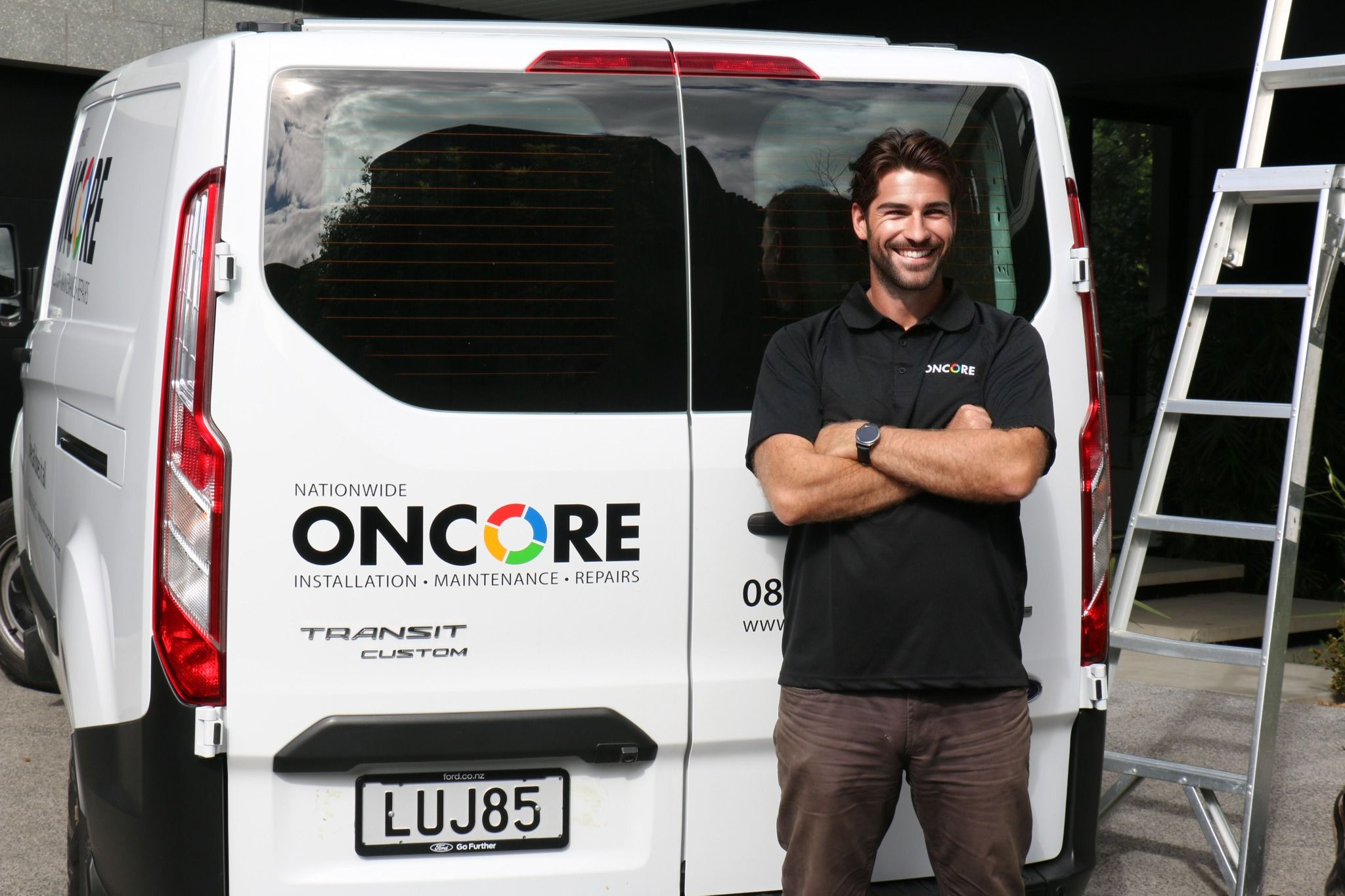
Contact a Professional
Back to topHow can we help? Give Oncore a call on 0800 33 66 55, or get in touch online to arrange a leak inspection, maintenance work, installations or repairs. Whether it’s a pipe leak, your roof needs repairs or you have experienced major flooding - we can help
